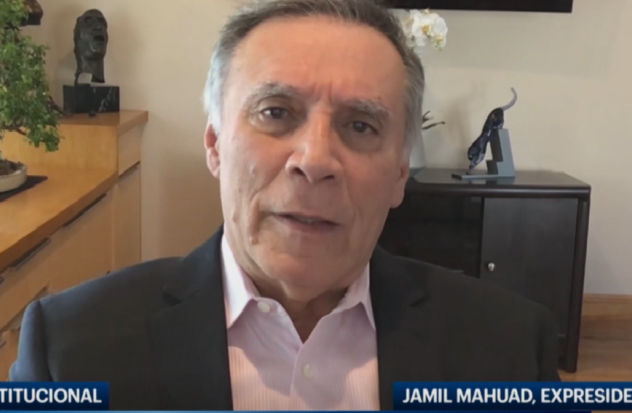QUITO. The former president of Ecuador Jamil Mahuad analyzed the similarities between the economic crisis that his country faced in 2000 and the current situation in Argentina, and reflects on the possibility that dollarization is a solution for the southern nation.
In exclusive interview for InfobaeMahuad referred to the dollarization of Ecuador and the possibilities that this measure will be considered in Argentina, as President Javier Milei has proposed as part of his government plan. The dollarization In Ecuador, the objective was stabilize the economy and reduce the inflationafter a severe crisis.
Mahuad dollarized the Ecuadorian economy in 2000 and the country is the only dollarized country in South America. 90% of its inhabitants defend the dollar as currency.
The former Ecuadorian president assures in an exclusive interview for Infobae that this economic policy decision became a stable public policy and after 24 years of the nation being dollarized, it is a state policy.
Mahuad’s dollarization
Mahuad, whose mandate was from 1998 to 2000, was marked by the implementation of dollarization, defending the measure as a key factor in strengthening the middle class and the country’s economic stability.
He noted that with the elimination of currency depreciation and inflation, people’s salaries were allowed to remain stable. This, in turn, gave them access to credit, allowing them to purchase goods such as cars and houses, which contributed to the growth of a budding middle class.
“Dollarization has been a very important anchor for the Ecuadorian economy,” said Mahuad. “It has survived six presidents, all kinds of crises, even socialist governments of the 21st century.”
He maintains that this measure can be a viable solution for Argentina if three fundamental conditions are met that the population must agree to and not oppose.
It states that there must be a minimum political consensus to guarantee the necessary legal reforms and a thorough analysis by qualified economists is required to determine the viability of the measure.
The former president highlights that in the case of Ecuador, dollarization was a success because these three conditions were met. The measure managed to control hyperinflation, stabilize the economy and generate confidence in the markets.
Mahuad warns that this measure is not a magic solution and that it does not eliminate the need for responsible fiscal management. In this sense, he criticizes the high public spending in Ecuador, which he considers a factor that has contributed to the country’s economic problems.
Dollarization could be an alternative
Regarding the situation in Argentina, Mahuad recognizes that the country is in a complex situation. However, he believes that dollarization could be a viable alternative if the appropriate measures are implemented.
The former president also refers to the figure of the president of Argentina Javier Milei, who defends dollarization, one of his star proposals to reactivate the economy of that country, control inflation, counteract the effects of the country’s economic and financial crisis.
Mahuad highlights Milei’s courage and his ability to generate change, but warns that dollarizing should not be a hasty decision.
Finally, the former president shares some lessons learned from the Ecuadorian experience. He points out the importance of conducting a deep technical analysis, of having the support of the IMF, the US Treasury, and of avoiding mistakes such as overvaluation of the exchange rate.
The interview with Jamil Mahuad offers a valuable perspective on dollarization as a tool to confront economic crises. His experience in Ecuador can be useful to Argentina in its search for solutions to the challenges it faces.
(email protected)
Source: Exclusive interview Infobae, Xataca, Bloomberg Linea



